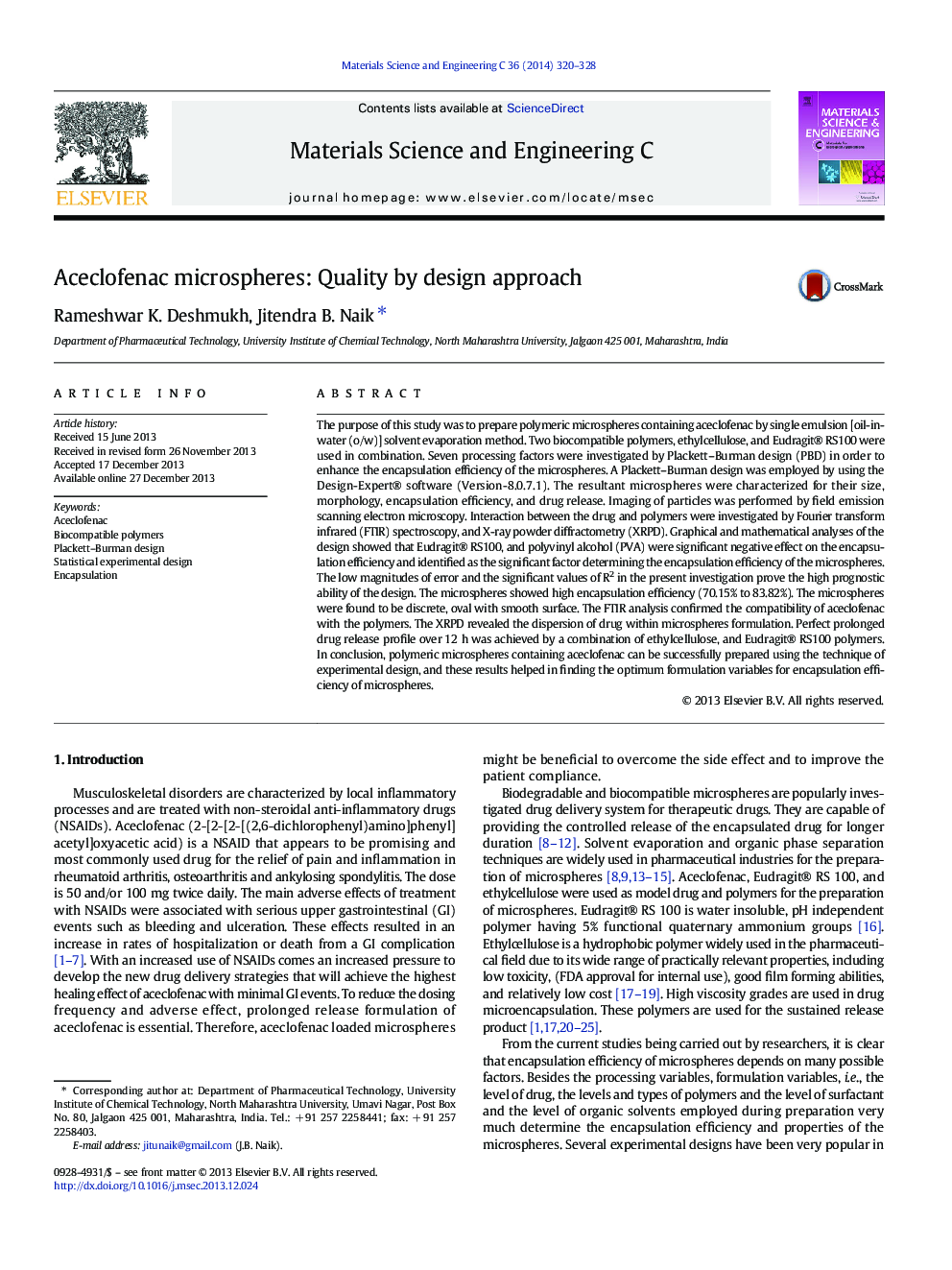| Article ID | Journal | Published Year | Pages | File Type |
|---|---|---|---|---|
| 1429252 | Materials Science and Engineering: C | 2014 | 9 Pages |
•Aceclofenac microspheres were prepared by the o/w solvent evaporation method.•Seven independent variables were investigated by Plackett–Burman design (PBD).•The microspheres showed high % encapsulation efficiency (70.15% to 83.82%).•In-vitro study of the microspheres showed a sustained drug release pattern.•PBD is an efficient tool in the optimization of the experiments.
The purpose of this study was to prepare polymeric microspheres containing aceclofenac by single emulsion [oil-in-water (o/w)] solvent evaporation method. Two biocompatible polymers, ethylcellulose, and Eudragit® RS100 were used in combination. Seven processing factors were investigated by Plackett–Burman design (PBD) in order to enhance the encapsulation efficiency of the microspheres. A Plackett–Burman design was employed by using the Design-Expert® software (Version-8.0.7.1). The resultant microspheres were characterized for their size, morphology, encapsulation efficiency, and drug release. Imaging of particles was performed by field emission scanning electron microscopy. Interaction between the drug and polymers were investigated by Fourier transform infrared (FTIR) spectroscopy, and X-ray powder diffractometry (XRPD). Graphical and mathematical analyses of the design showed that Eudragit® RS100, and polyvinyl alcohol (PVA) were significant negative effect on the encapsulation efficiency and identified as the significant factor determining the encapsulation efficiency of the microspheres. The low magnitudes of error and the significant values of R2 in the present investigation prove the high prognostic ability of the design. The microspheres showed high encapsulation efficiency (70.15% to 83.82%). The microspheres were found to be discrete, oval with smooth surface. The FTIR analysis confirmed the compatibility of aceclofenac with the polymers. The XRPD revealed the dispersion of drug within microspheres formulation. Perfect prolonged drug release profile over 12 h was achieved by a combination of ethylcellulose, and Eudragit® RS100 polymers. In conclusion, polymeric microspheres containing aceclofenac can be successfully prepared using the technique of experimental design, and these results helped in finding the optimum formulation variables for encapsulation efficiency of microspheres.
Graphical abstractThe polymeric microspheres, containing aceclofenac was successfully prepared by single emulsion [oil-in-water (o/w)] solvent evaporation method. Plackett–Burman screening design is used to identify the formulation/process conditions that affect product quality. Eudragit® RS100 and polyvinyl alcohol (Surfactant) were identified as the significant factors determining the encapsulation efficiency of the microspheres. The microspheres were found to be discrete, oval with perfect prolonged drug release profile. The results in these studies helped in finding the optimum formulation/processing variables for enhancing the encapsulation efficiency of microspheres.Figure optionsDownload full-size imageDownload as PowerPoint slide
